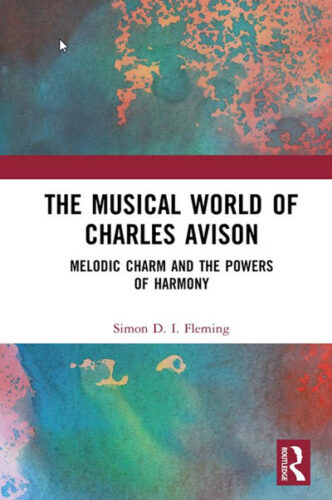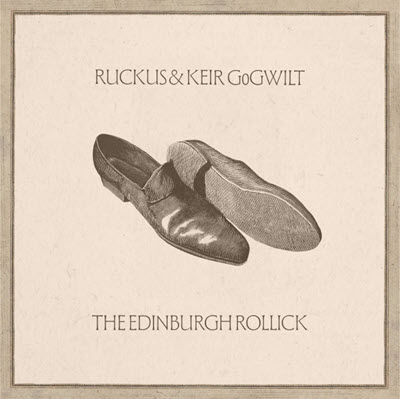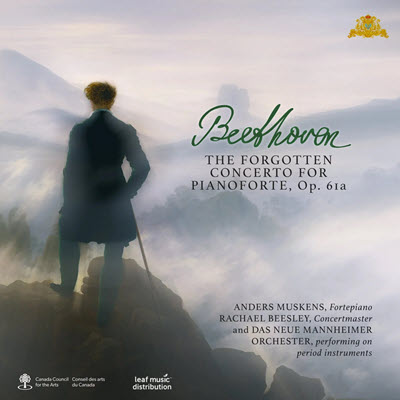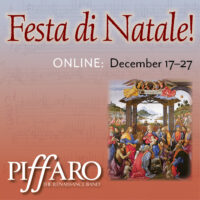by Ellen Sauer Tanyeri
Published February 3, 2025
Johann Friedrich Fasch: Orchestral Works, Volume 4. Tempesta di Mare, directed by Gwyn Roberts and Richard Stone. Chandos CHAN 0829
Who’s the best Baroque composer you’ve never heard of? Tempesta di Mare would argue it’s Johann Friedrich Fasch (1688-1758). In November, the Philadelphia-based ensemble released the latest installment in their series devoted to this underappreciated master. Their Fasch fascination began in 2007 and has grown with abundant research, international tours, and now four albums. Co-directors Gwyn Roberts (flute and recorder) and Richard Stone (lute) have led performances of over 35 of his works, including 28 modern premieres, many of them recorded.
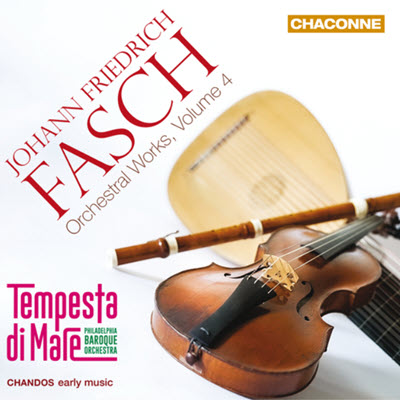
Like Tempesta’s previous Fasch CDs, this volume consists entirely of live performance recordings, but here it’s with a twist: They recorded it in Zerbst, Germany, where the composer became court Kapellmeister in 1722, a position he held the rest of his life. They were first invited to Zerbst to perform at the 2011 International Fasch Festival, around the release of their Volume 2 recording, and in June 2023 returned to receive the Fasch Prize, in recognition of their contributions to the performance and restoration of the composer’s oeuvre.
So who was Fasch? Until now, he’s often been remembered as one of the organist-composers who auditioned for, but failed to get, the big job at the Thomasschule in Leipzig after Kuhnau (his teacher) died, a position first offered to Telemann and, of course, eventually filled by J.S. Bach. Indeed, Fasch’s education and career paralleled Bach and Telemann’s, as he was part of a tight network of performers in the German-speaking lands during the high Baroque. It is thanks to this thriving ecosystem that any of his prodigious output survives today. Although much of Fasch’s vocal and dramatic output has been lost, he sent a considerable number of his instrumental works to colleagues Johann Georg Pisendel, in Dresden, and Christoph Graupner, in Darmstadt.
While it is tempting to try to compare Fasch to his direct contemporaries, including Bach and Handel, he is famously unclassifiable. If any comparison is to be made, one could say Fasch combines Telemann’s ingenuity with Haydn’s humor as an originator of the galant style — but Tempesta di Mare makes the case for taking this fascinating composer entirely on his own terms. And in many ways, they are the perfect ensemble for the job. In the program booklet for this album, co-director Richard Stone explains, “in Philly, we are very much a local group focused on promoting the music of Baroque composers who we have felt should become better known.”
Each of the four idiosyncratic works on this new release accentuate the unique strengths not just of this resurgent composer, but also of the ensemble that has championed his music for decades. The album is bookended by works that foreground Fasch’s exemplary wind writing and careful orchestration: the six-movement Orchestral Suites in E minor and D minor feature Tempesta’s incredible flute and oboe players in delicious four-voice counterpoint. Both suites are examples of Stone’s meticulous reconstruction and editing, as these piece exist in multiple versions — the E minor in Dresden and Darmstadt copies, and the D minor in separate parts and score in Dresden.
The Concerto in G Major for Violin and Strings is concertmaster Emlyn Ngai’s time to shine, playing from a part dotted with markings by Pisendel himself. Ngai embodies gallant swagger over the crisp and sparkling ensemble. The Sinfonia in B-flat, from the Darmstadt collection, contrasts thin, almost Classical scoring in the first, second, and fourth movements with a deliciously Baroque third movement, imitatively reminiscent of Bach. The sumptuously blended “fl-iolin” color of the unison treble lines shines through as a particular strength of Tempesta di Mare.
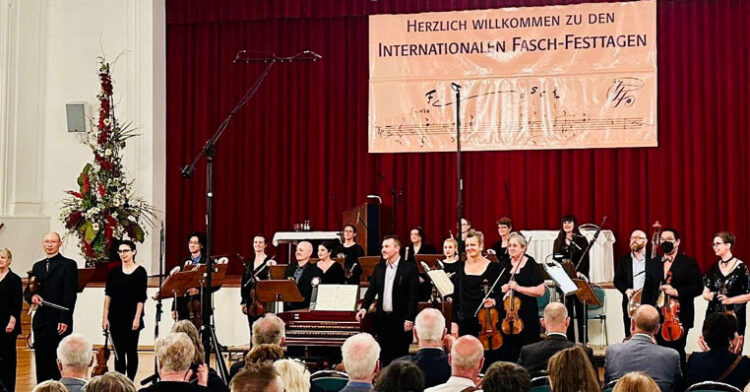
At every turn, Tempesta adds life and character to these works. Far from falling into the trap of treating their project as purely musicological, the years of time spent deeply immersed in Fasch’s compositions have given Roberts, Stone, Ngai, and the ensemble a privileged and personal relationship with the composer’s voice, which translates into vibrant and compelling interpretations.
The live recording also lends to this palpable edge, as inspired and playful as Fasch’s music itself — from the bouncing push, pull, and tumble of the E minor Bourée, to the dramatic, dynamic shifts in the Concerto’s Largo, to the delightfully drunken rubato in the wind couplet of the D minor Gavotte. The album is well worth a listen. I find it impossible to tire of this joyous journey — with three other dazzling installments to explore.
Ellen Sauer Tanyeri is a historical flute and recorder player. She holds graduate degrees from the University of Michigan and the Juilliard School and is currently pursuing a Ph.D in musicology at Case Western Reserve University. She is the 2024–25 Cleveland Orchestra Archives fellow. For EMA, she recently reviewed Lucie Horsch’s Frans Bruggen Project.

